Services on Demand
Journal
Article
Indicators
-
 Cited by SciELO
Cited by SciELO -
 Access statistics
Access statistics
Related links
-
 Cited by Google
Cited by Google -
 Similars in
SciELO
Similars in
SciELO -
 Similars in Google
Similars in Google
Share
DYNA
Print version ISSN 0012-7353On-line version ISSN 2346-2183
Dyna rev.fac.nac.minas vol.77 no.161 Medellín Jan./Mar. 2010
THE ROCK PROCESSING SECTOR: PART I: CUTTING TECHNOLOGY TOOLS, A NEW DIAMOND SEGMENT BAND SAW PART II: STUDY OF CUTTING FORCES
EL SECTOR TRANSFORMADOR DE ROCA: PARTE I: TECNOLOGÍAS DE CORTE, UNA NUEVA SIERRA DE CINTA CON SEGMENTOS DE DIAMANTE PARTE II: ESTUDIO SOBRE FUERZAS DE CORTE
ABRAHAM SEGADE ROBLEDA
Universidad de Vigo, E.T.S.I.Industriales, Lagoas – Marcosende 36310 Vigo, Spain, asegade@uvigo.es
JOSÉ ANTONIO VILÁN VILÁN
Universidad de Vigo, E.T.S.I.Industriales, Lagoas – Marcosende 36310 Vigo, Spain, jvilan@uvigo.es
MARCOS LÓPEZ LAGO
Universidad de Vigo, E.T.S.I.Industriales, Lagoas – Marcosende 36310 Vigo, Spain, mllago@uvigo.es
JAVIER TABOADA CASTRO
Universidad de Vigo, E.T.S.I.Minas, Lagoas – Marcosende 36310 Vigo, Spain, jtaboada@uvigo.es
Received for review June 16 th, 2009, accepted December 20 th, 2009, final version December 21 th, 2009
ABSTRACT: This article presents the state of the art in cutting procedures used for ornamental stone processing: primarily diamond segment discs, diamond wires and frame saws. In all these, a reduction in cutting thickness has a direct repercussion on profitability. A new tool is presented with a cutting thickness half that of the best achieved in conventional tools: a band saw with welded diamond segments. The first prototypes are built, cutting tests are carried out and the features of the cut are studied.
In the second part, existing studies on measurement of cutting force in conventional tools are reviewed and the prototype band saw machine is monitored. Cutting forces in this new process are studied, with measurement of tangential force and feed force under various working conditions.
KEYWORDS: Stone sawing, diamond tools, cutting thickness, band saw, cutting force.
RESUMEN: El artículo presenta el estado del arte de los procedimientos de corte empleados en la transformación de roca ornamental, principalmente, disco con segmentos de diamante, hilo diamantado y los telares. En todos ellos, una reducción en el espesor de corte, repercute de forma directa en la rentabilidad. Se presenta una herramienta novedosa, con un espesor de corte la mitad del mejor conseguido en herramientas convencionales: una sierra de cinta sobre la que se sueldan segmentos de diamante. Se construyen los primeros prototipos, se realizan pruebas de corte y se estudian las características del corte realizado.
En una segunda parte se revisan los estudios que existen en la actualidad sobre la medición de fuerzas de corte en granito con herramientas convencionales, y se monitoriza una máquina prototipo de sierra de cinta. Se estudian las fuerzas de corte para este nuevo proceso de corte, se mide la fuerza tangencial, y la fuerza de avance, bajo diferentes condiciones de trabajo.
PALABRAS CLAVE: Corte, roca ornamental, sierra de cinta.
PART I: CUTTING TECHNOLOGY TOOLS, A NEW DIAMOND SEGMENT BAND SAW
1. INTRODUCTION
The ornamental stone processing industry includes all the operations needed to create the finished product. Our description focuses on cutting machines – prior primarily frame saws, discs and diamond wires – for the new process presented here sits alongside these.
Theoretical study of ornamental rock cutting began at the end of the 20th century and it was Ertingshausen, [1], who proposed the first cutting model. This basic model has been widely accepted, [2], and afterwards other complex theories have been coming out, [3, 4, 5]. This recent development provides some generic publications, [6], but almost all the studies are centered on circular diamond saws.
In the next paragraphs a brief description of current technology for cutting machines is provided.
1.1 FramesA frame is a large, 16-metre structure weighing roughly 50 tons which uses numerous strips as a cutting tool, Figure 1. The cutting strips are taut and use a connecting rod - crank to move backwards and forwards. The strips are usually between 4 – 5 mm thick and a mixture of water and metal shot is added on the downward stroke to aid cutting and cool the strip. The thickness of the final cut is normally between 8 – 10 mm.
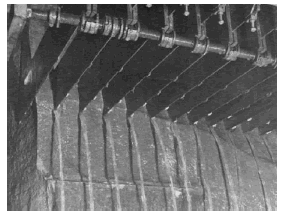
Figure 1. Frame cutting strips
Frame saws have been used for years, but there are few technical publications about cutting performance. Some of them deal with slabs quality [7] or fastening system for saw blades [8].
1.2 Disc cuttingThe cutting tool is a steel alloy disc with diamond segments welded to the periphery, Figure 2. Depending on the thickness to be cut the size of the disc can vary, ranging between 300 mm and 4 metres in diameter.
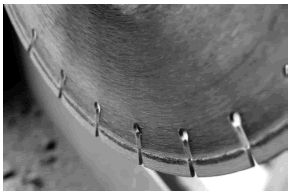
Figure 2. Disc with diamond segments
Large disc machines are fitted with discs of 4 metres in diameter with segments that are 14 mm thick. Such machines, when fitted with powerful motors of up to 110 kW, can open large blocks measuring 1.7 metres.
This is the most studied technology and almost all the publications are focused on it. Some of the studies deal with segment wear [9, 10, 11], and sawability influence from rock properties or composition [12 -18].
1.3 Wire cuttingA conventional stationary wire cutting machine for the processing industry weights around six tons and has a cutting motor frequently fitted of between 10 – 20 kW. The cutting tool is a steel wire, usually from four to five millimetres thick, on to which diamond beads, as they are called, are attached, Figure 3 a). These beads have the same structure as the diamond segments: sintered polycrystalline diamonds in a metal matrix. There must be separation between the diamond beads to allow for the removal of cut away material, and 30 – 40 beads are usually fitted per metre. The element separating the beads may differ depending on the type of wire, which may be springs or injected polymer, but normally vulcanised rubber or plastic, Figure 3 b).
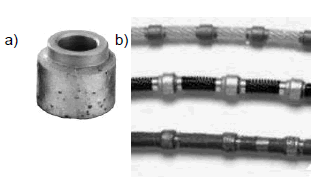
Figure 3. a) Diamond bead b) Diamond wire
The proposed system consists of diamond segments welded to a continuous band, [24], Figure 4.
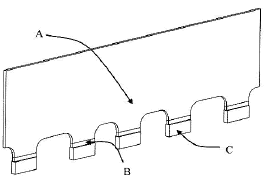
Figure 4. Band saw with diamond segments [24]
The saw consists of a flexible strip (A) cut with merlons (B) that allow the diamond segments to be welded on the ends. As the strip is very narrow, 1.3 mm in this case, small 3 mm thick segments can be welded, by which a major reduction can be achieved in cutting thickness.
2. THE IMPORTANCE OF THICKNESS REDUCTION
In conventional processes, the most common thicknesses are the following:
- Frames open a cut of between 8 – 10 mm to make slabs.
- Disc machines must be fitted with segments of 14 mm to open blocks.
- Wire machines. In a standard processing sector machine, the diamond bead coating has an exterior diameter of 8.5 mm, and when it is fully worn reaches up to 6.5 mm.
The proposed band saw reduces the tool thickness to a minimum of 3 mm. Thus, although most of the advantages of this cutting process stem from reducing cut thickness, they can be detailed as follows:
2.1 Reduction in cutting thickness
Frames and diamond wire cutters currently have the smallest thicknesses for block cutting, which can reach 7 mm, with difficulty, when the wire is worn, and only the latest machines fit 6mm diameter wire. With the proposed cutting machine it would be relatively simple to work with a 3mm thick tool, and even manufacture special tools to reach 2.5 mm.
2.2 Less wasted rock
Wasted rock is a major concern, particularly in the production of slabs. To evaluate the amount of rock wasted in slab production, the productivity of a block of 1,500 mm. will be studied. It will be used for producing 20 mm slabs, and it will be taken into consideration that cutting thickness will be wasted, Table 1.
Table 1. Using a 1,500 mm block to make 20 mm slabs

In relative terms, compared to standard frame production, productivity for the same block would be increased by 24%, and waste would be reduced by 48% at the same time, i.e. practically halved. This turns into a major saving, particularly when dealing with rock with high value features.
2.3 Sawdust reduction – waste management costSawdust waste from cutting processes causes major separation and purifying problems. Processing companies must fit purifying equipment for sawdust separation as it is mixed with large amounts of water, and then they must pay for transport and storage. The wasted rock calculation in Table 1 considers that with a decrease in cutting thickness more cuts can be made in the block; but for the same number of cuts the waste reduction is at a ratio of 10 – 4, which means 60% less. Even for a minimum cut of 7 mm, done using a wire at the end of its life, waste reduction would be 43%, which means 43% less sawdust to treat. 2.4 Cutting tool performance
Cutting tools base their cutting ability on a process of abrasion. Their performance can be evaluated according to the amount of diamond used up during cutting, divided by the frontal area that faces the cut.
Calculating for a standard diamond wire, the diamond bead has an initial diameter of 8.5 mm and is worn down to 6.5 mm. The amount of diamond worn away is the volume between the initial and final diameters, multiplied by the length of the bead, Figure 5 a). The frontal attack area varies for the beads on the wire, starting at 8.5x 6 mm2, and ending at 6.5x 6 mm. For the calculation an approximate average value of 7.5x 6mm is taken in this case.
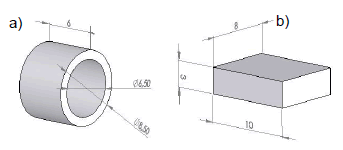
Figure 5. Volume of diamond: a) Diamond bead wire, b) Proposed saw segment
For a 3x 10x 10 mm diamond segment, a volume of diamond for wear of 3x 10x 8 mm can be estimated, maintaining a constant frontal area of 3x 10 mm.
The worn volume to area ratio is indicative of the millimetres of material the cutting element has in reserve for each millimetre squared of surface it cuts. The calculations in Table 2 show that for the diamond beaded wire there are 2.77 mm of reserve material, whereas for the diamond segment there are 8 mm.
Table 2. Volume for wear and cutting area, for diamond bead and diamond segment
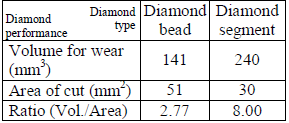
The performance that can be attained with a diamond segment is almost three times greater than that for a diamond beaded wire, which means a much longer tool lifetime can be expected.
2.5 Less power needed for cutting
Given that the power consumed during cutting, and the forces that arise, are proportional to the amount of material removed per unit of time, [25], a substantial 60% decrease in cutting thickness will lead to a substantial decrease in power consumed.
2.6 Increased speed
The speed limitation for wire cutting is a consequence of the straightness of the cut, for if the feed movement is very fast the cut will begin to warp. In wire cutting the normal load in the wire is 3,000 N, and it is a flexible element. However, the band is more rigid (against flexion in the cutting direction) and greater forces are used, 8,000 N for a conventional saw. At the same time, the amount of material removed to make the cut is reduced and therefore the feed force is reduced, which leads us to believe that feed speed will increase.
Because of these improvements, an increase in feed speed is expected if working conditions are favourable, which means the same facility will achieve greater productivity as the number of metres cut per machine for each unit of time will increase.
3. SAW CONSTRUCTION
It would certainly be better to use a large scale saw for improved cutting conditions. The first prototype has been built using a 1.3 mm thick strip fitted with segments of approximately 3x 10x 13 mm3, Figure 6.
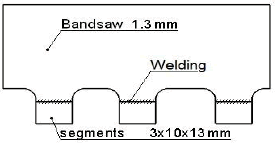
Figure 6. Diamond segment band saw
In order to cut the saw with merlon shaped geometry it was decided to cut in stretches, using a waterjet to avoid problems of thermal alteration in the steel.
A study was made into the possibilities of welding the diamond segments by laser or silver welding. The latter was chosen as it is a more widespread method with mechanical properties at the join believed to be sufficient. Extreme care was taken when welding the whole periphery of the segment in order to ensure correct alignment. The appearance of the saw after construction is showed, Figure 7.
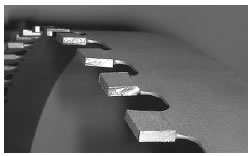
Figure 7. Final geometry of the segmented saw
4. CUTTING TESTS
Once the saw with segments was built, it was fitted to a specially adapted prototype machine and checked for trouble-free operation. Figure 8 shows the band saw going through one of the support guides.
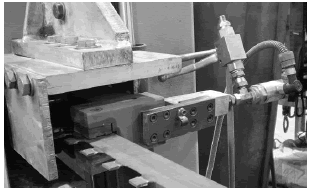
Figure 8. Diamond segment saw passing through support guides
Two ornamental rock types were cut in the tests: brown silvestre granite and Spanish Porriño pink granite. The brown granite has a compressive strength of 81 MPa, [26], and a coarse grain size and is considered to be easy to machine as there is little cohesion between grains. The Porriño pink granite has a compressive strength of 114 MPa, [26], and a fine grain size. It has a very high cutting resistance due to the great cohesion between its grains.
Proper operation was checked for speeds of between 25 and 30 m/s and, furthermore, the detritus cleaning systems were fitted and checked. A nominal speed of 28 m/s was used to start cutting, and a low speed (120 mm/h) was initially used for feeding, Figure 9, and then gradually increased.
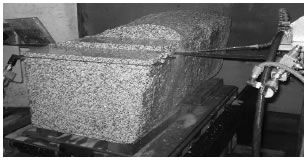
Figure 9. Brown granite cutting in progress
The saw was observed to behave well during cutting. Final cut surfaces showed good flatness and speeds similar to those for diamond wire were achieved.
The prototype machine was fitted with a saw with a 1.3x 38 mm2 useful section, and a 500 mm wide block of ornamental rock was cut. As the machine had small pulleys, it was not possible to tauten the saw with too much force as this would have over-punished it. With larger pulleys (recommendable 1,200 mm vs. 650 mm at the prototype machine), an increase would have been possible to a more desirable 120 MPa and a greater feed speed. At this stress it is thought that highly competitive speeds could be reached. The following results were obtained:
For brown granite, at a pressure of 25 MPa on the saw, feed speeds of 1,200 mm/h were reached. With higher stresses, of 80 MPa, feed speeds of 3,000 mm/h were reached. For 500 mm wide blocks of pink granite, with a stress of 60 MPa, approximately 600 mm/h was reached.
PART II: STUDY OF CUTTING FORCES
5. INTRODUCTION
The study of cutting forces in granite processing is a field that has developed only recently.
Segment cutting can be considered as abrasion at multiple contact points (diamond grains) at different passing depths, [27]. Only a few grains of diamond form part of the abrasion process on each pass. A variety of factors influence this process, such as diamond grain concentration in the matrix, grain geometry, each diamond grain’s protrusion out of the matrix, and so on.
The diamond segment is made up of sintered diamond grains in a matrix. As the diamond is stronger, it remains in view and the supporting matrix is eroded away. Wear on the matrix varies according to the attack face or the tail face of the diamond grain, Figure 10.
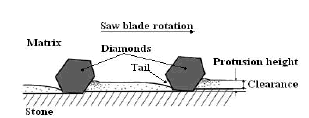
Figure 10. Gradual segment wear, [4]
The segment is at the top of the figure, and the rock at the bottom. The segment moves towards the right, which means the segment’s attack face is also to the right. Greater wear on the matrix is observed at this attack face, which leads to some protrusion of the diamond out of the matrix, and less wear takes place on the tail side as the matrix material is protected by the diamond grain. When good protrusion of the diamond out of the matrix is produced, the segment is said to be sharp as it is this protrusion that does the actual cutting.
Estimating and discovering the exact cutting forces in ornamental rock sawing is a difficult task as it depends on many factors such as the specific strength of the rock being cut, the cooling water flow rate, the type of segment fitted, how worn this is, and so on.
6. FORCES IN CUTTING PROCESS
6.1 Diamond wire cuttingZhang, used a conventional 8 mm diameter diamond wire for cutting at an axial speed of 23 m/s. The cutting of Red Shidao granite was studied with 110 MPa of compressive strength. Feed force was measured, [23], but not the force in a tangential direction from the cut. Graphs were produced with the above force values for different stone widths and feed speeds, Figure 11:
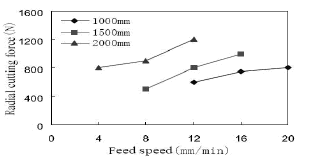
Figure 11. Forces in diamond wire cutting, [23]
With the amount of material removed unchanged, it is not the same to cut a wide material with a slow feed as it is to cut a narrow material with a fast feed. The narrow material needs a faster feed, which means the effective area of each working diamond grain is greater, that is, there is a greater feed per grain of diamond. For the wider material the feed per grain of diamond is less for the same amount of material removed.
There has also been study into the influence of cutting speed, although the cutting tool, a 0.8 mm diameter wire, was totally different. In the work by Ge, [28], it was discovered that given a significant increase in cutting speed a slight reduction in tangential force was produced.
6.2 Diamond disc cuttingThe main parameters for diamond disc cutting are, Figure 12: cutting speed, vs, is the tangential velocity of the disc at the moment of cutting; feed speed, vw, is the velocity at which the disc’s axle is moved relative to the rock; and pass depth, ap, is the depth at which the disc penetrates into the rock at each pass.
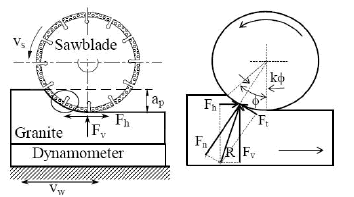
Figure 12. Force diagram for disc cutting, [29]
Several studies provide normal, tangential, or compound cutting force [25, 29 - 32]. In the case of diamond disc cutting the amount of removed material per time unit is obtained as the product of the pass depth times the feed speed. Some articles, [25, 29], provide the normal and tangential force value, versus specific removal rate. See some results on the figure 13.
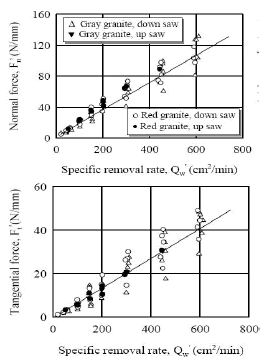
Figure 13. Cutting forces according to material removal rate, [29]
This tests were carried out on two granite types, grey and red, but their compressive strength was not given. According to documental research this could be between 110 – 180 MPa. The machine was fitted with a 350 mm diameter disc, with 3.6 mm wide segments, and cut at a speed of 30 m/s.
The efficiency of a given cutting process is measured by specific energy, which is defined as the energy consumed per unit volume of material removal. So, some tests deal with specific energy measurement, [25, 33 - 35], and how it is influenced by feed rate, wear or cutting depth.
6.3 Frame cutting
Frame cutting is different from other cutting processes, there is an alternating strip movement and feeding is not done in a constant way. That is why cutting force calculations are more complicated and studies made [27], are limited to giving average force values according to average feed values. What can be said from their data is that the force in the normal direction is between three and 3.5 times the value of the tangential force.
6.4 Band saw cutting
To measure ornamental rock cutting forces with band saws, a data acquisition system must be prepared for the prototype machine as nonesuch is available off the shelf. As in the first part, two rock types were cut during the tests: brown granite as a soft one, and pink granite as a hard one.
7. MONITORING THE PROTOTYPE MACHINE
The tangential cutting force (FT) and the normal feed force (FA) will be measured. Several instruments are used to measure force: monitoring of the electric motor operating parameters and a hydraulic system, but the base instrument for these measurements will be a linear guide system coupled to a force transducer, as can be seen in the following figure:
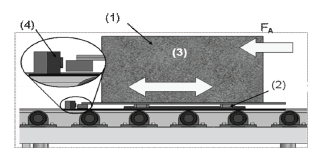
Figure 14. Block setup using linear guides for force measurement
The granite block (1) is placed between two plates with a linear guide system (2). Thus the rock (1) is easily moved in direction (3), and when cutting it, the force in the feed direction, FA, aligned with the guide system (2), is entirely transmitted to the force transducer (4). Furthermore, the linear guide system setup will also be valid for measuring the tangential force (FT) rotating 90º the guide lines, and aligning them with the tangential direction. To minimize errors due to friction, small rocks are used for measurement taking.
7.1 Tangential cutting forceBoth from the data recorded from the motors and from the force transducer, it can be seen that the tangential cutting force remains highly uniform during cutting. The tangential cutting force hardly undergoes any change as the feed moves forwards, Figure 15, the oscillation that appears is no greater than 0.5 N and at times an oscillation of this value can be seen when cutting a length of rock with constant parameters.
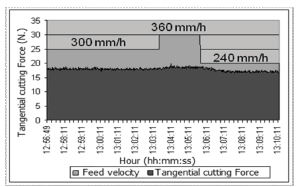
Figure 15. FT measured by force transducer
Forces were measured, and the results will be showed per millimetre of thickness cut, in this case, 4 mm. Tangential force will be represented for a range of removed material amounts, Table 3, always with 25 m/s of cutting speed.
Table 3. FT for 500 mm wide rock

The tangential force value needed to make a cut is very similar, despite the different properties of the materials being cut. This could be due to the fact that the force in a tangential direction is caused to a greater extent by the drag of the detritus produced in the cut as well as the drag of the cooling water.
The tangential force needed to keep the machine moving has been estimated at 56 N, which means the tangential force to maintain the cut, under the measured conditions, has a really low value, below 50% of the force needed to keep the machine in operation. Such a small force has few mechanical design implications for the machine, but it can relevant with regards motor size as 65% of power deployed by the motor is used to keep the machine running rather than cutting.
7.2 Feed forceAccording to the tests carried out, the feed force is greater than the tangential cutting force, above all for hard granite. Just as before, forces were measured, and the results will be showed per millimetre of thickness cut, in this case 4 mm. Normal feed force will be represented for a range of removed material amounts, Table 4, always with 25 m/s of cutting speed.
Table 4. FA for 500 mm wide rock

For the feed force, normal to the cut, the difference between the two materials is much more representative. For similar amounts of removed material (up to 50 cm2/min), the force for the pink granite, 20 N/mm, is found to be four times greater than that for the brown granite, 5 N/mm. According to the literature this difference is due to the hardness of the material, as a cutting force in the normal direction is what the diamond grain applies to the rock to be cut in order to compress it and gradually achieve the destruction of material.
This can also be clearly seen in the results, where the greater the amount of material removed, the greater the necessary feed force, which is even more obvious with the hard granite.
The tests were always done working with saws with a useful section of 1.3x 38 mm2, and several tensions on the saw, but always with low values in order to obtain longer duration.
Keeping up a stress of 25 MPa on the saw, which meant 1,250 MPa of force per saw section, it has been shown empirically that with feed forces below 30 N (7.5 N/mm) the cut is kept straight. For a stress of 60 MPa, 2,960 N of force per stretch, it can be seen that with forces below 70 N (18 N/mm) the cut is kept quite straight. It should also be said that some cuts made at speeds ranging from 40 – 50 cm2/min in pink granite showed irreversible warping in the cut after time.
If the saw were oversized and similar stresses used for cutting steel could be applied, 120 MPa or higher, higher feed speeds for pink granite cutting could certainly have been achieved.
8. CONCLUSIONS
Firstly, it has been shown to be possible to cut ornamental rock with a band saw with diamond segments. When constructing the saw it is important to have good alignment in the die cutting and welding, and not to thermally affect the saw. The systems for detritus cleaning, saw positioning and cutting feed worked adequately. Points for improvement are the use of greater stresses on the saw, and a larger sized one. The aim of both these is to obtain greater feed speeds and improve this cutting system’s competitiveness.
Despite the limitations in the cutting force measuring systems, a series of conclusions can be obtained from the measurements made.
The feed force, normal to the cutting direction, varies noticeably with the amount of material removed per time unit. This variation is more marked in a hard rock such as the Porriño pink than in a relatively soft rock like the brown silvestre. Compared to other cutting systems, the feed force in the band saw cutting has an intermediate value between that for discs and wires, greater than disc cutting, and smaller than diamond wire cutting.
The tangential cutting force has a relatively small value and represents, in general terms, only 35% of the power consumed by the cutting motor, the rest of the power is needed to keep the pulleys and the saw moving. For very hard rocks such as pink Porriño, the tangential cutting force comes to a third of the feed force. This detail also coincides with results from other researchers in similar materials, but using conventional cutting procedures. For softer rocks, such as the brown granite, the feed force and the tangential cutting force have a similar module.
9. ACKNOWLEDGEMENTS
The authors would like to thank the collaboration of the Xunta de Galicia through the “Dirección General de Investigación y Desarrollo”, as this work is funded by the “Plan Gallego de Investigación, Desarrollo e Innovación Tecnológica”, reference: PGIDT06REM032E.
REFERENCES
[1] ERTINGSHAUSEN, W. Zerspanung von Granit mit Diamant-Trennschleifscheiben [PhD Thesis] Universität Hannover, 1984. [ Links ]
[2] Tönshoff, H.K.; Hillmann-Apmann, H.; Asche, J. Diamond tools in stone and civil engineering industry: cutting principles, wear and applications. Diamond and Related Materials, 11, 736 - 741, 2002. [ Links ]
[3] KONSTANTY, J. Theoretical analysis of stone sawing with diamonds. Journal of Materials Processing Technology, 123, 146 - 154, 2002. [ Links ]
[4] DI ILIO, A. AND TOGNA A. A theoretical wear model for diamond tools in stone cutting International Journal of Machine Tools & Manufacture 43, 1171 - 1177, 2003 [ Links ]
[5] BOLATASHVILI, N.D.; MGALOBLISHVILI, K.D. AND DADUNASHVILI G.G. Theoretical and experimental study of the wear factor for a diamond stone-cutting tool. Measurement Techniques, 52 (3), 292 - 295, 2009. [ Links ]
[6] BROOK, B. Principles of diamond tool technology for sawing rock. International Journal of Rock Mechanics and Mining Sciences, 39, 41 - 58, 2002. [ Links ]
[7] KAHRAMAN, S.; ULKER, U. AND DELIBALTA, M.S. A quality classification of building stones from P-wave velocity and its application to stone cutting with gang saws. The Journal of The Southern African Institute of Mining and Metallurgy, 107, 427 - 430, 2007. [ Links ]
[8] ORLOWSKI, K.; WASIELEWSKI, R. AND BLACHARSKI, W. Frictinonal group fastening effectiveness of mini gang saw blades in the frame sawing machine. Holz als Roh- un Werkstoff, 59, 9 - 12, 2001. [ Links ]
[9] LUO, S.Y. Characteristics of diamond sawblade wear in sawing. International Journal of Machine Tools and Manufacture, 36 (6), 661 - 672, 1996. [ Links ]
[10] ERSOY, A.; BUYUKSAGIC, S. AND ATICI, U. Wear characteristics of circular diamond saws in the cutting of different hard abrasive rocks. Wear, 258, 1422 - 1436, 2005 [ Links ]
[11] EYUBOGLU, A.S.; OZCELIK, Y.; KULAKSIZ, S. AND ENGIN, I.C. Statistical and microscopic investigation of disc segment wear related to sawing Ankara andesites. International Journal of Rock Mechanics and Mining Sciences, 40, 405 - 414, 2003. [ Links ]
[12] SÁNCHEZ DELGADO, N.; RODRÍGUEZ REY, A.; SUÁREZ DEL RÍO, L.M.; DÍEZ SARRIÁ, I.; CALLEJA, L AND RUIZ DE ARGANDOÑA, V.G. The influence of rock microhardness on the sawability of Pink Porrino granite (Spain). International Journal of Rock Mechanics and Mining Sciences, 42, 161 - 166, 2005. [ Links ]
[13] FENER, M.; KAHRAMAN, S. AND OZDER M.O. Performance prediction of circular diamond saws from mechanical rock properties in cutting carbonate rocks. Rock Mechanics and Rock Engineering, 40 (5), 505 - 517, 2007. [ Links ]
[14] KAHRAMAN, S.; FENER, M. AND GUNAYDIN, O. Predicting the sawability of carbonate rocks using multiple curvilinear regression analysis. International Journal of Rock Mechanics and Mining Sciences, 41, 1123 - 1131, 2004. [ Links ]
[15] KAHRAMAN, S.; ALTUN, H.; TEZEKICI, B.S. AND FENER, M. Sawability prediction of carbonate rocks from shear strength parameters using artificial neural networks. International Journal of Rock Mechanics and Mining Sciences, 43, 157 - 164. [ Links ]
[16] SUN, L.; PAN J. AND LIN C. A new approach to improve the performance of diamond sawblades. Materials Letters, 57, 1010 - 1014, 2002. [ Links ]
[17] TUTMEZ, B.; KAHRAMAN, S. AND GUNAYDIN, O. Multifactorial fuzzy approach to the sawability classification of building stones. Construction and Building Materials, 21, 1672 - 1679, 2007. [ Links ]
[18] WEI, X; WANG, C.Y. AND ZHOU, Z.H. Study on the fuzzy ranking of granite sawability. Journal of Materials Porcessing Technology, 139, 277 - 280, 2003. [ Links ]
[19] ÖZÇELIK, Y.; KULAKSIZ, S. AND ÇETIN, M.C. Assesment of the wear of diamond beads in the cutting of different rock types by the ridge regression. Journal of Materials Processing Technology, 127, 392 - 400, 2002. [ Links ]
[20] MIKAEIL, R.; ATAEI, M. AND HOSEINIE, S.H. Predicting the production rate of diamond wire saws in carbonate rock cutting. Industrial Diamond Review, 68 (3), 28 - 34, 2008. [ Links ]
[21] JAIN, S.C. AND RATHORE, S.S. Role of cut size area on the performance of diamond wire saw machine in quarrying of marble. International Journal of Mining, Reclamation and Environment, 23 (2), 79 - 91, 2009. [ Links ]
[22] HUANG, H.; HUANG, G.; GUO, H. AND XU X. Wear characteristics of diamond beads in wire sawing granite. Chinese Journal of Mechanical Engineering, 44 (8), 112 - 117, 2008. [ Links ]
[23] Zhang, J.S. AND Wang, Z. Technical parameters and wear resistibility of diamond wire-saw in granite cutting. Key Engineering Materials, 259 - 260, 122 - 126, 2004. [ Links ]
[24] VILÁN, J.A., SEGADE, A., LÓPEZ, M. AND TABOADA, J. - Universidad de Vigo. "Sierra de cinta sin fin con segmentos de diamante" Oficina Española de Patentes y Marcas, ES 2 262 453. 2006. [ Links ]
[25] XU, X., LI, Y. AND MALKIN, S. Forces and energy in circular sawing and grinding of granite, Journal of Manufacturing Science and Engineering, 123, 13 - 22, 2001. [ Links ]
[26] QUIROGA, J.R., CASARES, A. AND SUÁREZ, V.L. A pedra de Galicia, Consellería de Industria e Comercio. Xunta de Galicia, 1997. [ Links ]
[27] WANG, C.Y. AND ROLF, C. Frame sawing of stone - Theory and technology. Key Engineering Materials, 250, 171 - 180, 2003. [ Links ]
[28] GE, P.Q., ZHANG, L., GAO, W. AND LIU, Z.C. Development of endless diamond wire saw and sawing experiments. Materials Science Forums 471 - 472: 481 - 484, 2004. [ Links ]
[29] XU, X.P. AND LI Y. The effects of swarf in the diamond sawing of granite. Key Engineering Materials, 250, 187 - 193, 2003. [ Links ]
[30] ERSOY, A. AND ATICI, U. Performance characteristics of circular diamond saws in cutting different types of rocks. Diamond and Related Materials, 13, 22 - 37, 2004. [ Links ]
[31] XU, X.; LI, Y. AND YU Y. Force ratio in the circular sawing of granites with a diamond segmented blade. Journal of Materials Processing Technology, 139, 281 - 285, 2003. [ Links ]
[32] XU, X. Friction studies on the process in circular sawing of granites. Tribology Letters, 7, 221 - 227, 1999. [ Links ]
[33] ATICI, U. AND ERSOY, A. Correlation of specific energy of cutting saws and drilling bits with rock brittleness and destruction energy. Journal of Materials Processing Technology, 209, 2602 - 2612, 2009. [ Links ]
[34] BUYUKSAGIS, I.S. Effect of cutting mode on the sawability of granites using segmented circular diamond sawblade. Journal of Materials Processing Technology, 183, 399 - 406, 2007. [ Links ]
[35] BUYUKSAGIS, I.S. AND GOKTAN, R.M. Investigation of marble machining performance using an instrumented block-cutter. Journal of Materials Processing Technology, 169, 258 - 262, 2005. [ Links ]














